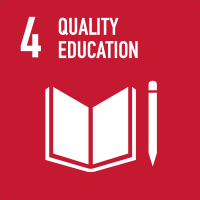Studying at the University of Verona
Here you can find information on the organisational aspects of the Programme, lecture timetables, learning activities and useful contact details for your time at the University, from enrolment to graduation.
Study Plan
The Study Plan includes all modules, teaching and learning activities that each student will need to undertake during their time at the University.
Please select your Study Plan based on your enrollment year.
1° Year
| Modules | Credits | TAF | SSD |
|---|
Professional Laboratories (1st year)
2° Year activated in the A.Y. 2023/2024
| Modules | Credits | TAF | SSD |
|---|
Professional Laboratories (2nd year)
3° Year activated in the A.Y. 2024/2025
| Modules | Credits | TAF | SSD |
|---|
Professional Laboratories (3rd year)
| Modules | Credits | TAF | SSD |
|---|
Professional Laboratories (1st year)
| Modules | Credits | TAF | SSD |
|---|
Professional Laboratories (2nd year)
| Modules | Credits | TAF | SSD |
|---|
Professional Laboratories (3rd year)
Legend | Type of training activity (TTA)
TAF (Type of Educational Activity) All courses and activities are classified into different types of educational activities, indicated by a letter.
Professional Laboratories (2nd year) [Gruppo 1] (2023/2024)
Teaching code
4S000105
Teacher
Coordinator
Credits
1
Language
Italian
Scientific Disciplinary Sector (SSD)
MED/48 - NURSING IN NEUROPSYCHIATRY AND REHABILITATION
Period
1° e 2° semestre (corsi annuali) PROFESSIONE SANITARIE dal Oct 2, 2023 al Sep 30, 2024.
Courses Single
Not Authorized
Learning objectives
Use knowledge acquired from frontal lessons in the planning of the physiotherapy process on real clinical cases, by means of videotapes, paper, simulated cases with patients affected by musculoskeletal or neurological pathologies. Develop clinical reasoning from data collection to planning and implementation of physiotherapy intervention. Organize therapeutic exercises by taking into account the main aspects (e.g. biomechanics, communication, education and others) and applying basic manual therapy techniques.
Prerequisites and basic notions
Know the physiology of the nervous-muscular-articular systems, neurology and neuro pathophysiology. Know and be able to use the methodologies for the evaluation of patients with neurological problems. Learn about applications of innovative technologies based on electromechanical and robotic devices for the upper and lower limb.
Program
Define the concept of evaluation based on the constructs of the ICF, starting from the anamnesis up to the clinical evaluation of the neurological patient. Encourage clinical observation to promote identification of neurological signs and symptoms. Put into practice clinical tests to collect symptoms and signs, which do not emerge from observation of the patient. Develop the student's clinical reasoning once the clinical information has been collected, facilitate the differential diagnosis with the aim of defining a precise functional diagnosis with respect to neurological dysfunctions. Define a rehabilitation project with long, medium and short term objectives. For each identified objective, build a coherent rehabilitation treatment through rehabilitation proposals that include: patient education, caregiver education, therapeutic exercise, manual therapy, use of aids and orthoses and use of robotic devices.
Bibliography
Didactic methods
Theoretical frontal lesson on evaluation through briefings with the class group to bring out the students' theoretical knowledge. Theoretical exercise in small groups on clinical cases and practical exercise in small groups. Group plenary to bring out students' expressed and tacit knowledge and skills and organize them in an orderly and coherent way with the teaching.
Learning assessment procedures
Active participation of the student during the small group exercise in which they are required to implement clinical reasoning consistent with the mandate of the exercises. Participation in the plenary by the student in which a reflection on the acted and tacit skills during the small group exercise is required.
Evaluation criteria
Observation of skills expressed by students during group exercises. Identification of the student's reflections that allow him to connect theory and practice.
Criteria for the composition of the final grade
The final vote will be composed as follows: approved or not approved.
Exam language
Italiano Inglese

